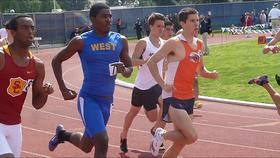High unemployment rates continue to be a big thorn in the side of a sluggish economy showing little improvement. Making that thorn even more painful is the fact that many companies actually do want to hire – but cannot find the skilled labor force they need to do the jobs that sit vacant. Is there a way to fill the voids in the workforce and improve economic conditions at the same time? A new federal grant hopes to do just that – by providing community colleges nationwide the financial opportunity and incentive to train up a new generation of skilled workers in the industries where the country needs them most.
The Important Role of Community College
Many financial and labor experts have predicted that community colleges would be the key resource for training a new generation of skilled labor. These institutions of higher education have traditionally been more pragmatically-minded than many of the four-year universities that provide lofty or purely theoretical degrees without much thought as to how those degrees will be used in the real workforce. Community colleges work more closely with companies in the community to provide specific training needed at any given time. They also have the flexibility to change with the times, offering degree programs that provide the most opportunity after the certificate is earned.
The Obama Administration has long agreed that the path to lower unemployment and a more robust economy must include community colleges. Last fall, the President launched the






















